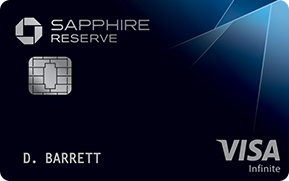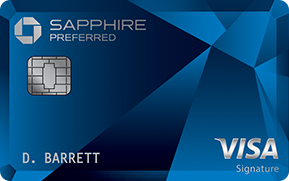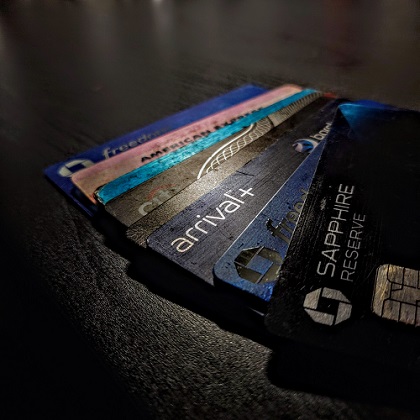The Chase Sapphire Reserve has been the number one credit card in my wallet over the past 4 years. As a frequent non-rev traveler, I spent most of my weekends away from home. This meant that most of my spend fell under the Sapphire Reserve’s travel or dining bonus categories, which is a great way to rack up Chase’s Ultimate Rewards (UR) points.
Collecting Chase’s Ultimate Rewards points is an awesome way to score free hotel nights, and I am firm believe that nonrevs should never collect airline miles. I would rather take an extra connection (or two) while flying standby instead of actually buying a ticket. Nonrevs can take advantage of virtually limitless flight options, and I vowed to never fly confirmed space so long as I could fly standby.
For that reason, I don’t generally recommend co-branded airline credit cards to new nonrevs. This is where a flexible travel card like the Chase Sapphire Reserve becomes valuable.
Why is the Chase Sapphire Reserve so valuable?
Because my strategy requires collecting points with the sole objective of redeeming for hotel nights, I only cash in my Chase Ultimate Rewards for one of two options:
Redeeming points via the Chase Ultimate Rewards Travel Portal
Chase’s in-house Ultimate Rewards portal is a way to redeem your points at a fixed 1.5 cents-per-point (CPP) rate. Cardholders of the less expensive Sapphire Preferred can redeem their points for a lower 1.25 CPP rate. If you don’t care about hotel loyalty programs, then the Ultimate Rewards portal is a great way to keep your options open.
Chase’s portal is powered by Expedia, so you can browse/book any hotel that you might expect through Expedia’s own site. The prices listed on the Chase portal should match Expedia’s site and thus fluctuate based on demand, which means the quantity of points required to book a confirmation will change accordingly.
Favorite Chase Portal redemptions: I have used this portal to book everything from a seaside apartment on Bonaire to a two-story suite in Salzburg.
Transferring Chase Ultimate Rewards points to World of Hyatt program
I love the Hyatt portfolio of hotels, and their reward redemption tiers make last-minute non-rev travel a breeze. Hotel prices are dynamic and change based on daily demand, but Hyatt’s reward tiers remain constant. For example, Hyatt’s Category 2 hotels will always cost 8,000 points. Assuming you are trying to beat the 1.5 CPP rate, the 8,000 rate would be a good deal for any hotel listed >$120 per night. Nonrevs have the luxury of knowing these tiered rates provides a level of price stability, which is especially helpful when booking last-minute trips.
Hyatt has resisted the dynamic peak & off-peak rewards pricing structure for years, but that will change in 2021. We all realized this was coming sooner or later, and initial reports from Hyatt appear to still provide plenty of opportunities for great redemptions.
Favorite World of Hyatt program redemptions: visiting the soft open of the Grand Hyatt Baha Mar in Nassau or spending Memorial Day weekend at the Grand Hyatt in Washington D.C.

Additional perks of the Chase Sapphire Reserve
Earning Chase Ultimate Rewards points is easily the most valuable perk of holding the Sapphire Reserve, but there are a number of other perks that frequent travelers (and especially nonrevs) are able to enjoy:
Complimentary Priority Pass Select membership
Access to the Priority Pass network of airport lounges has probably saved me at least $1,000 over the years. How many times have you been rolled over and spent $30+ on airport food waiting for the next flight? Grabbing complimentary coffee, beer, or snacks from this network of lounges was honestly awesome.
Since I cannot possibly imagine life without lounge access, I also hold a Hilton Honors American Express Surpass credit card that will still allow for 10 Priority Pass visits per year.
Primary Car Rental Coverage
Most premium travel credit cards offer some sort of rental car insurance coverage, but it is often a secondary policy that only kicks in after your personal insurance bears the brunt of it. Both the Chase Sapphire Preferred and Sapphire Reserve offer primary collision damage coverage that gives renters extra peace of mind.
No Foreign Transaction Fees
I like to travel. I especially like to travel to new countries. Thankfully, many of the cards that are currently in my wallet offer this same perk.
$300 Travel Credit
It only takes a trip or two to use up the $300 travel credit, which helps with the sting of the $450 $550 Chase Sapphire Reserve annual fee. This credit, applied at the beginning of each calendar year, effectively drops the annual fee of the Sapphire Reserve to $150 $250.
Why am I saying goodbye to the Chase Sapphire Reserve
So with all of these travel perks (including over a dozen more listed on Chase’s website), how could any serious traveler justify giving up on the Chase Sapphire Reserve?
Here are three reasons why I decided to officially downgrade my CSR:
My travel patterns have changed
This should come as no surprise, but I am nowhere near hitting my annual goal of 100 flights in 2020. In years past, I would have had no issues justifying the annual fee because the 4.5% effective earnings rate (3x UR points on travel & dining) on my normal travel budget would allow me to come out way ahead.
My breakeven numbers are not as favorable for 2020 & 2021, so I want to avoid paying the annual fee this month.
I have other ways to get lounge access
I carry other credit cards that feature some sort of airport lounge access, so losing the unlimited Priority Pass visits means I will just have to be more selective about which lounges I visit. While Priority Pass has some gems (The Club at SJC & KAL’s Lounge at LAX come to mind), I can live without visiting 50 times a year.
I am under Chase’s 5/24 rule
This is honestly the main reason why I think now is the perfect time to drop my Chase Sapphire Reserve. Chase’s infamous 5/24 rule (Chase will not approve your credit card application if you have been approved for 5+ cards in the past 24 months) is perhaps the most well-known. Most people would never come close to hitting this, but travel hackers & credit card churners like myself know all too well how frustrating this can be.
I am under Chase’s 1/48 rule
Less well-known is Chase’s 1/48 rule which states that you can only receive a Sapphire-branded new cardmember sign-up bonus every 48 months. The Chase Sapphire Reserve was introduced in August 2016, which means anyone who applied for the card upon its debut should be nearing the expiration of this 48 month period.
With the Chase Sapphire Preferred bonus recently being upped to 80,000 Ultimate Rewards points, Q4 2020 seems like a golden opportunity to position myself to capture the 80k UR sign-up bonus on the CSP.

Verdict & Next Steps
After reviewing the pros & cons, I think serious travelers who are under both the 5/24 & 1/48 rules this year should seriously consider dropping their Chase Sapphire Reserve card if they are confident that they can reap the sign-up bonus on the Sapphire Preferred.
Don’t cancel that card, though! Chase just came out with a great no annual fee card, the Chase Freedom Flex, which is an upgraded version of their original Freedom card with 5% rotating categories. Calling Chase and asking for a product change from the Sapphire Reserve to the Freedom Flex was a painless exercise that took 5 minutes. I was told that my annual fee refund should post within the next 2 cycles, but the card number in the Chase app changed immediately.
Now that I have officially PC’ed my Sapphire Reserve, all that remains is reapplying for the Sapphire Preferred when I become eligible for a Sapphire sign-up bonus in November.
If you have a new Chase Sapphire Preferred referral link for the 80k Ultimate Rewards sign-up bonus, feel free to drop it in the comments below!




Pingback: Should you apply for the Capital One Venture X credit card? (2024 update)